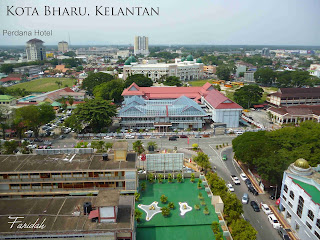Everyone aged above 55 today knows and remembers Merdeka. We sang the Merdeka songs as kids in the early 1960s and 1970s. We hardly worried about life. We had no worries. We were happy kids.
What was Merdeka about? When did it begin? Where did it happen? What actually happened? Why were we called British Malaya? Why were were called Tanah Melayu? Why were we called Persekutuan Tanah Melayu? What is the Federation of Malaya? Why did we have the Unfederated States? Why are we called Malaysia today? When did we become Malaysia?
Are we patriotic enough? I don't know. We have a national flag (Jalur Gemilang) and a national flower (Hibiscus/bunga raya). We have a national animal (tiger). Do we have a national bird? Do we have a national staple? Do we have a national menu, meal or dish? Do we have a national attire? We have a national language (Bahasa Malaysia/Bahasa Melayu). We have a national logo for our airlines (wau bulan). We have a national airlines (Malaysian Airlines System, MAS). We have our own curreny (Ringgit Malaysia and sen). We have our own banking system, judiciary and education system. We are a fortunate nation.
What does Merdeka mean? It means digging for old photos for me, and trying to understand what happened at Stadium Merdeka that 31 August morning. It means I must revise and read about what Tunku did for our country. It means I must also understand all the people and factions who helped contribute to our independence.
What is independence? Why do we need independence?
Independence means we get to do things our way, our Malaysian way.
We have much resemblance to the others in this region. We are very similar to the Indonesians who are all around us. We are similar to the Thai Malays who are above us. We are similar to the Filipino Malays who are at 2 o'clock from where we are. We have ties to many Singaporean Malays who are below us on an island. If we combine all the Malays in this region, we are a large mass.
Back to our Merdeka story, what have I got to share in this post? I have some old photos in my harddisk. I probably downloaded them without making note of where I obtained them. I also have a set of photos my late father took at Stadium Merdeka in Kuala Lumpur on 31 August 1957. I wasn't born yet at the time of Merdeka. Merdeka was first proclaimed in Bandar Hilir, Malacca. We have had good prime ministers so far. We had about 55 Malay doctors at Merdeka; my maternal grandfather was one of them.
Independence documents in London 1953 - 1956:
The first King (Agong) and Prime Minister (Perdana Menteri) 1957:
Malaysia's Prime Ministers 1957 - 2013:
Sixth Prime Minister: Dato' Seri Mohammad Najib bin Abdul Razak
As 6th PM: 3 April 2009 - 2 April 2013; 2013-2017.
Deputy PM: 7 January 2004 - 3 April 2009.
Menteri Besar Pahang: 4 May 1982 - 14 August 1986.
Born 23 July 1953.
Proclamation of Independence Memorial in Melaka (Malacca):
MEMORIAL PENGISTIHARAN KEMERDEKAAN
Memorial Pengistiharan Kemerdekaan dinamakan sedemikian kerana pengumuman kemerdekaan Tanah Melayu dilakukan oleh Perdana Menteri Malaysia yang pertama, Al-marhum Tunku Abdul Rahman Putra Al-Haj di Padang Panglima yang terletak di seberang jalan memorial ini. Bangunan usang yang menjadi tarikan ini kini menempatkan butir-butir sejarah perjalanan negara ke arah mencapai kemerdekaan. Peminat sejarah juga boleh menyaksikan tayangan filem rencana mengenai peristiwa-peristiwa penting dalam sejarah kemerdekaan negara di pawagam kecil.
PROCLAMATION OF INDEPENDENCE MEMORIAL
The Proclamation of Independence Memorial is so named because the attainment of Malaya's independence was announced by Malaysia's first Prime Minister, Tunku Abdul Rahman Putra Al-Haj, at Warriors Field just across the road. This quaint old building now houses an exhibition that traces the history of the nation's convoluted journey to independence. History buffs should note that films documenting the highlights of the nation's independence are regularly shown at the theatrette.
(There is a photo of Tunku in a car, being driven around the Malacca Padang. I showed the photo in my class but my medical students did not know nor recognise Tunku at all. I have to search for the photo.)
At Stadium Merdeka, Bukit Petaling in Kuala Lumpur on Saturday, 1 August 1957 (it was drizzling). These photos are from my late father's collection. The original photos were small, dark and vague. I edited the photos using Zoner Photo Studio 15:
 |
| That's what my father wrote on the back of each photo below. |
There was a post-Merdeka Parade in Bandar Hilir, about a month or so after Merdeka. I have to search for the photos and create another post.


































































